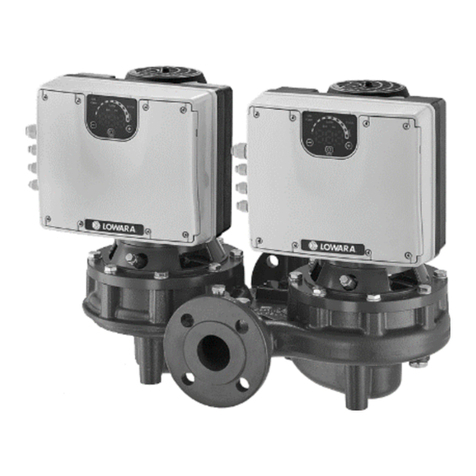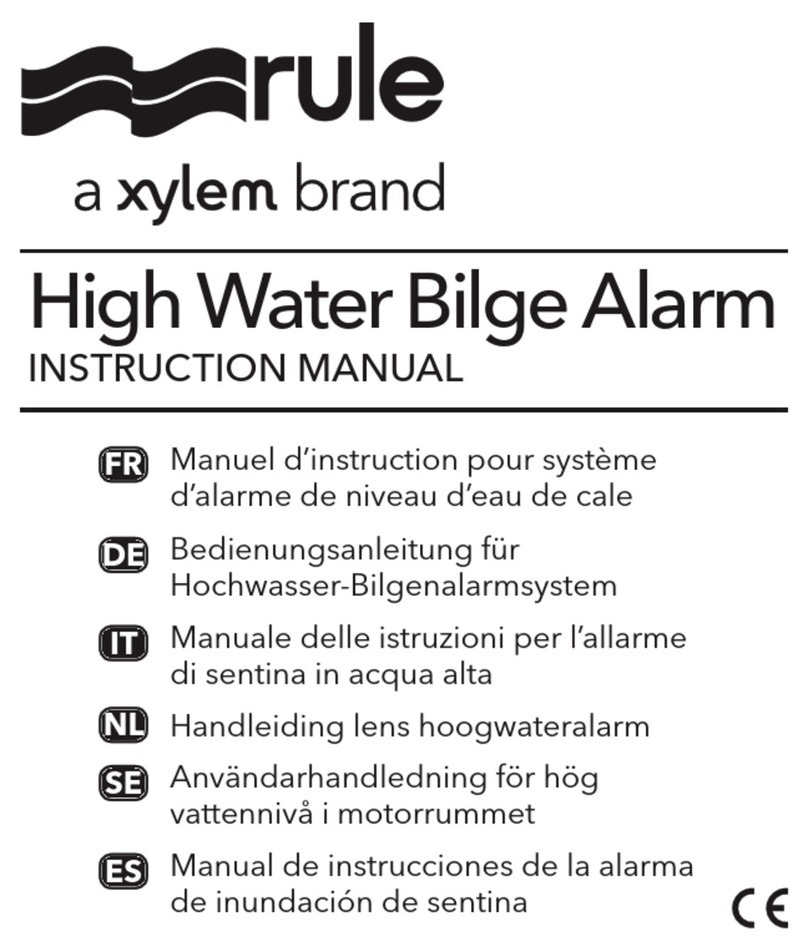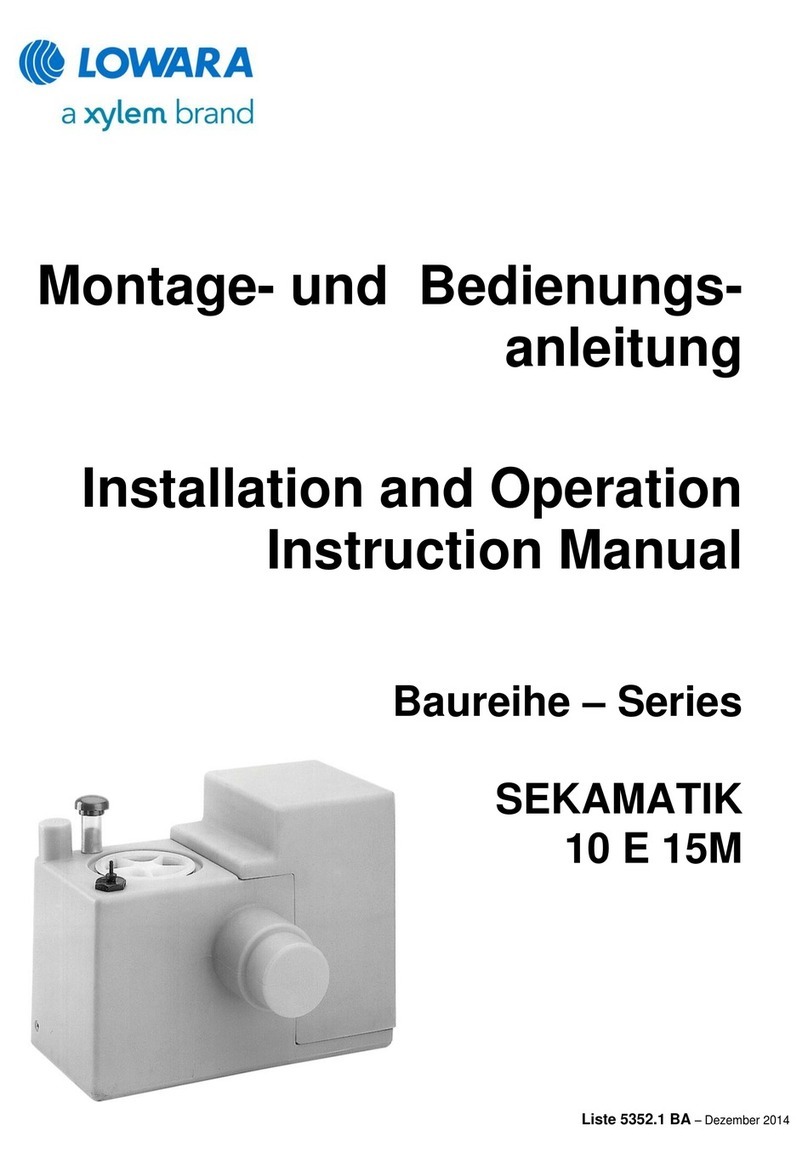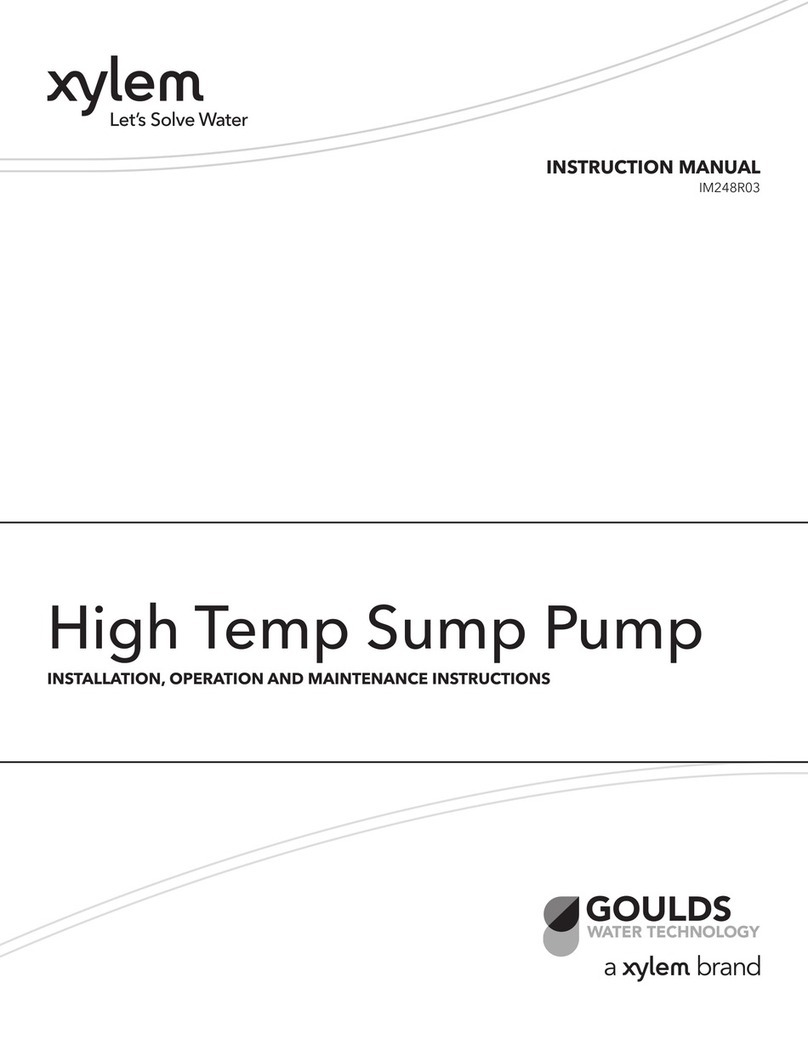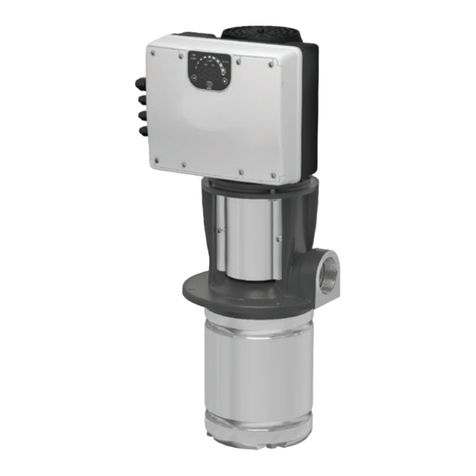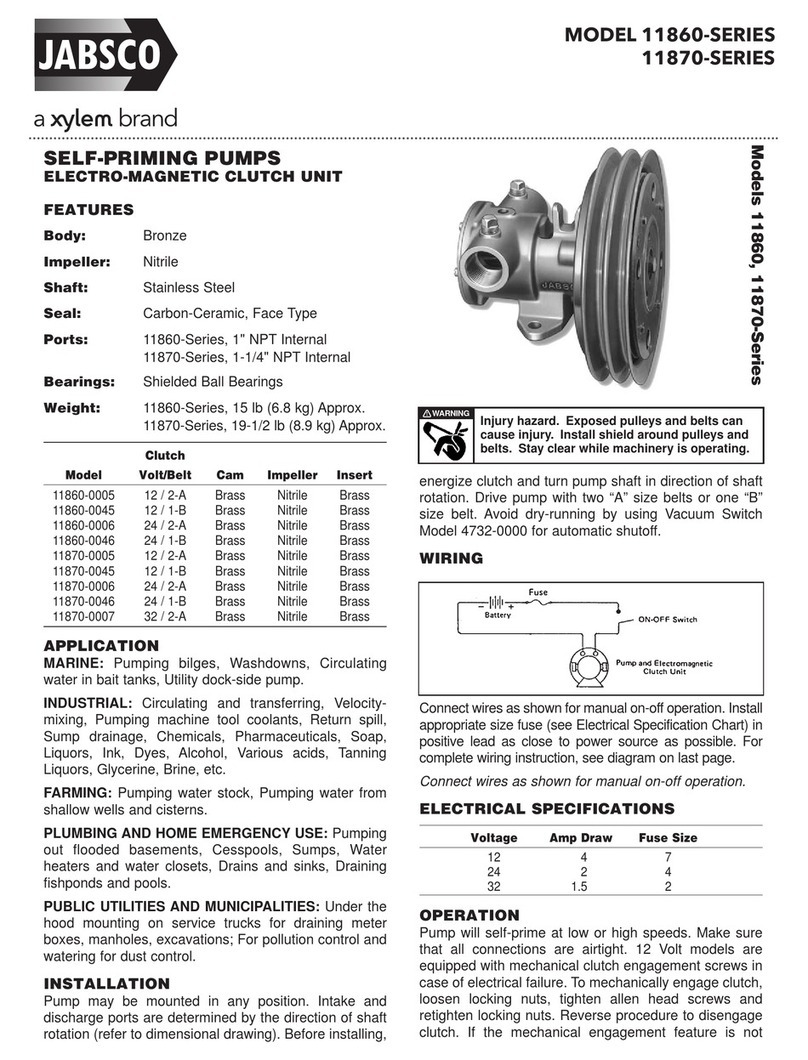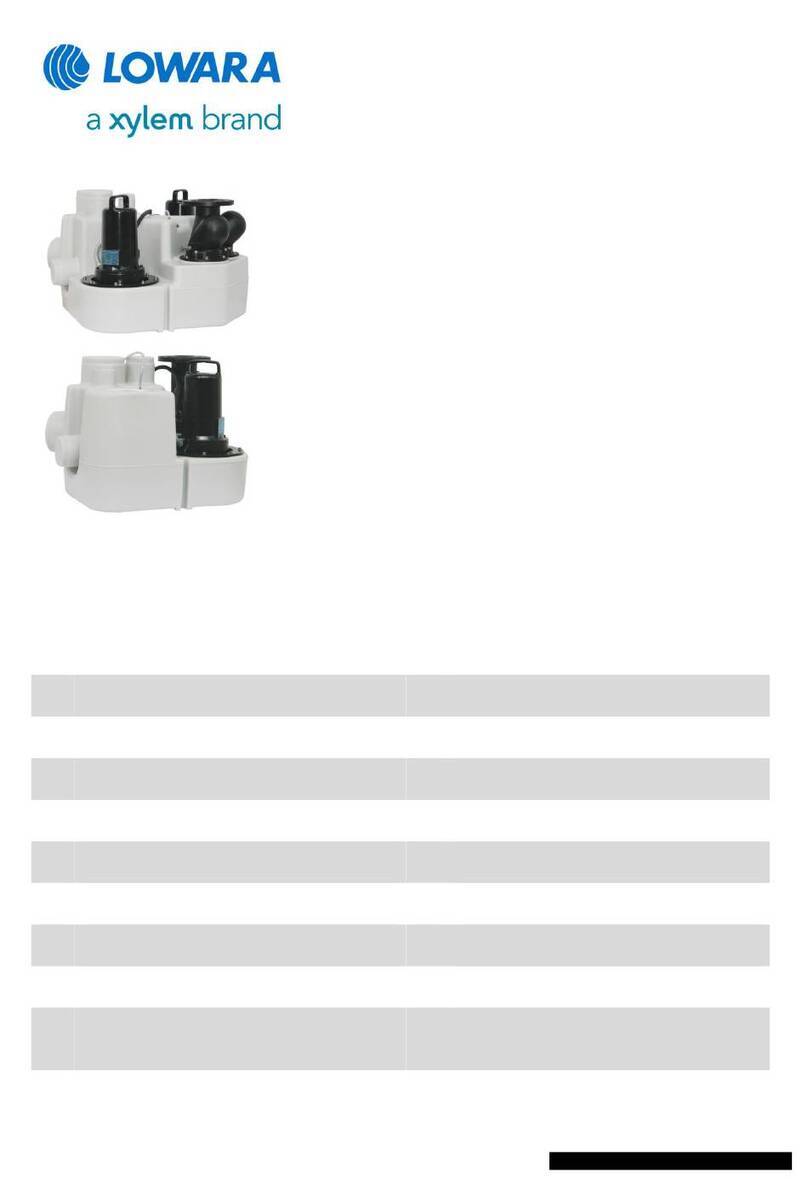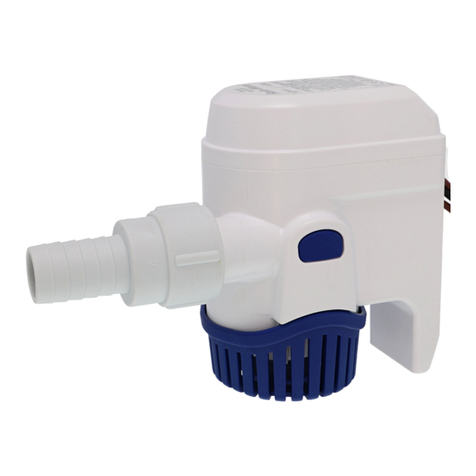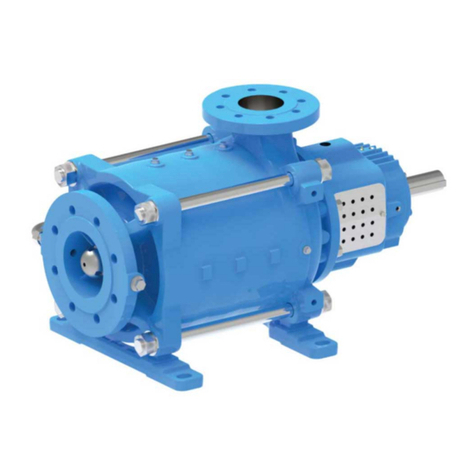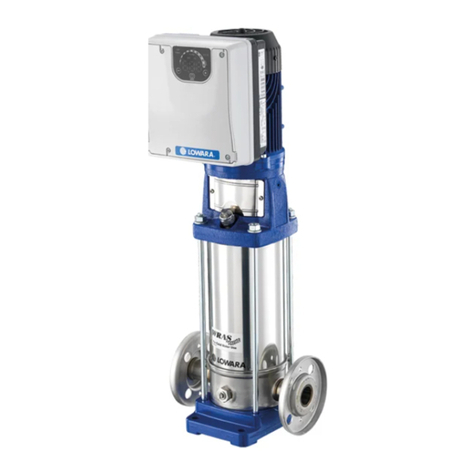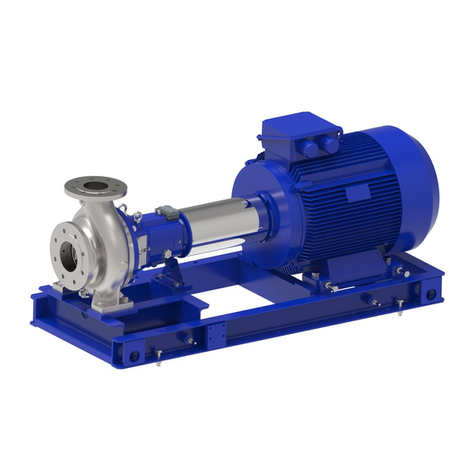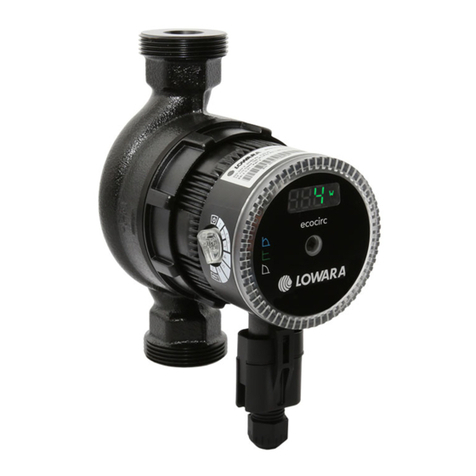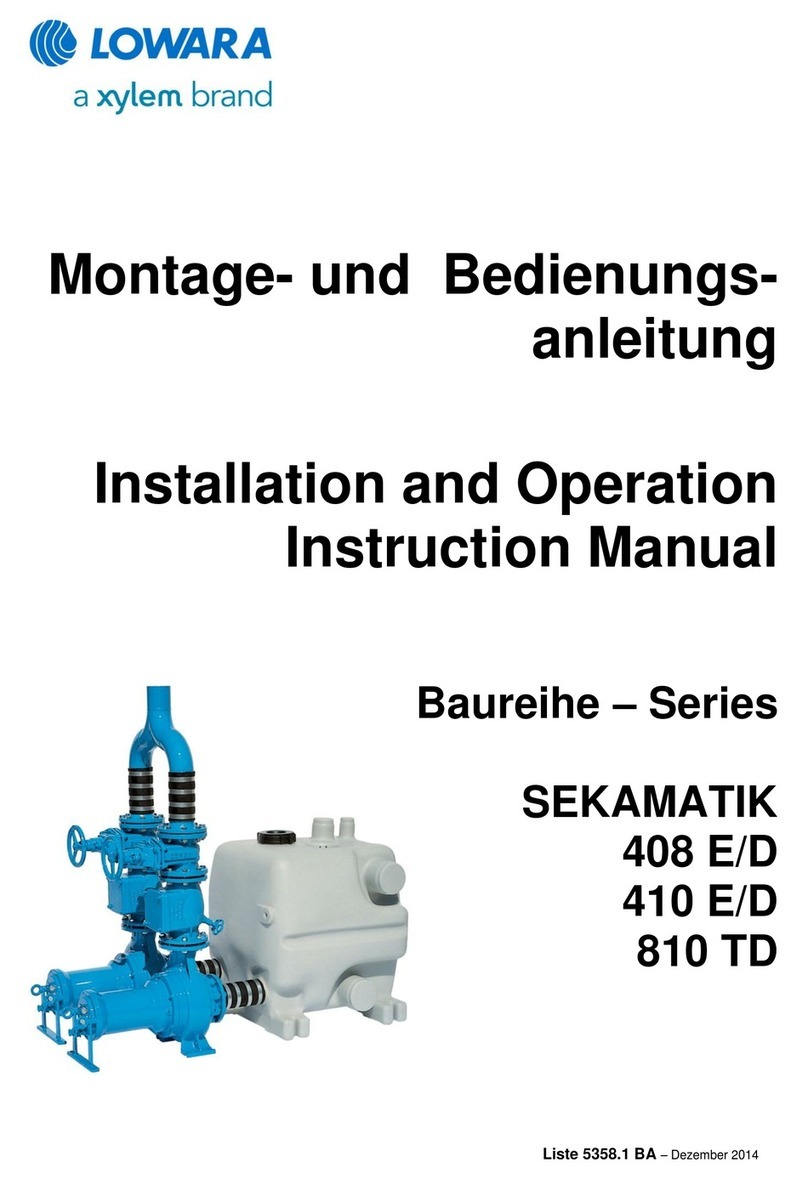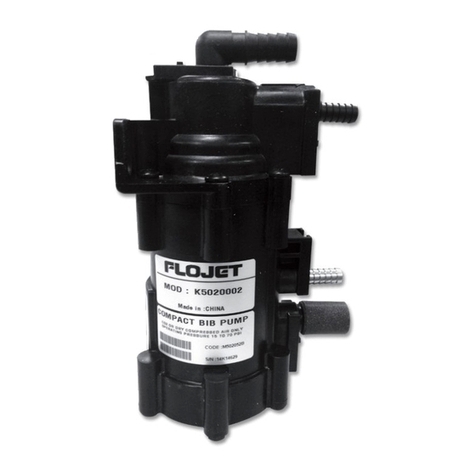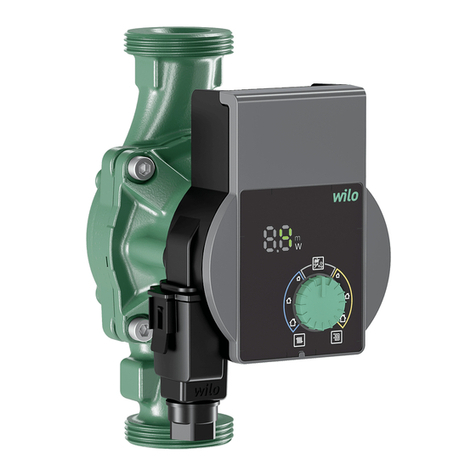
a solid mounting surface at the four base attachment
points. It is recommended that heavy duty reinforced
type A fuel hose be used to connect the pump with the
engine pan. The hose assembly should be made with
permanent type end connector fittings similar to hose
assemblies for on-board natural or propane gas systems.
WIRING
The pump should be wired to an overload protected
electrical distri bu tion panel (circuit breaker or fuse panel)
with marine grade copper stranded wire, sized to match
the recommendation in the Electrical Specifications
chart. The electrical circuit breaker (or fuse) must also
be sized to match the Electrical Specifications
recommendation. Connect the motor’s orange wire lead
to positive and the black lead to negative. Make all
connections with mechanical locking type connectors
such as crimp type butt connectors. Once the wiring is
completed, the electrical wires should be secured to a
solid surface every eighteen inches along the length of
their run to prevent movement and abrasion.
WIRE SIZE (AWG [mm2]) for various conductor lengths
Model Amp Fuse/ Length of run in feet (metres)*
Number Volts Draw Brkr. 0-10(0-3) 10-20(3-6) 20-30(6-9) 30-50(9-15)
17830-0012 12 10 15 16(1.5) 14(2.5) 12(4) 10(6)
17830-0024 24 5816(1.5) 16(1.5) 16(1.5) 16(1.5)
*The length of run is the total length of both positive and negative conductors
measured from the positive power source to the pump and back to negative.
SERVICE
The Jabsco Oil Change Pump should provide many
years of reliable service without the need for regular or
scheduled maintenance. However, if sludge should
become lodged anywhere in the system, it can cause
excessive vacuum or pressure on the pump that may
damage the flexible impeller. If this occurs pump
performance will be reduced and it will become
necessary to change the pump’s impeller.
Before performing any service work, ensure the system’s
security valve is closed and the power to the pump is
turned off and labeled “Do Not Turn On” to guard against
it being accidentally turned back on while service work is
being performed.
IMPELLER REPLACEMENT
To change the impeller, remove the pump end cover
screws, end cover and O-ring. Grasp the impeller’s hub
with a pair of pliers and pull the old impeller from the
impeller bore.
With a rotary motion (to flex the blades of the new
impeller under the cam silhouette in the pump body)
push the new impeller into the body until the flat of the
impeller insert aligns with the flat of the shaft. When the
two flats align, push the impeller firmly into the impeller
bore until it bottoms in the bore. Place the end cover
O-ring seal in the O-ring groove in the body. (A small
amount of grease may be used to hold it in place.)
Position the end cover against the body and secure it
with the end cover screws.
SEAL REPLACEMENT
Under normal circumstances, the shaft seal should
function properly for several hundred hours of operation.
If the seal should ever develop a leak and need to be
replaced, begin the procedure by following the above
instructions for changing an impeller. Once the impeller
has been removed, remove the two screws that secure
the pump head to the motor and pull the pump body off
of the motor shaft. Using a piece of 1/2" wood dowel (or
similar material) from the back (motor) side of the body
push against the seal to dislodge it from the seal bore.
When the seal is removed, ensure the seal bore is clean
of all debris. From the front (impeller) side of the pump
housing, place the new seal in the seal bore, ensuring
the lip of the seal is pointing toward the impeller bore
Overload
Protected
Distribution
Panel
Orange +
Black –
Battery
–
+Discharge
clockwise
rotation*
Discharge
counter
clockwise
rotation*

